Epsilon ONE® – Applications
Testing with 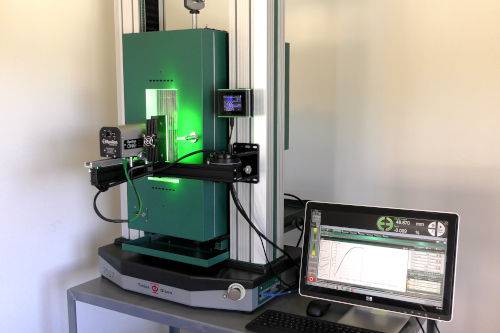 Environmental Chambers
Environmental Chambers
Testing with an environmental chamber is vastly more convenient with Epsilon ONE. Its swing-away mount eliminates extensometer setup between tests: shut the door, swing the Epsilon ONE into place, and run the test. There is no time required for mounting an extensometer, and the Epsilon ONE remains at room temperature so there is no wait time for the extensometer to stabilize at the test temperature. Epsilon ONE works with many materials being tested in an environmental chamber: plastics, rubber, composites, wire, and more.
See how it works ▶
Test temperatures from -80 °C to +300 °C or more are possible – contact Epsilon to discuss your application requirements and compatibility with your environmental chamber.
Rebar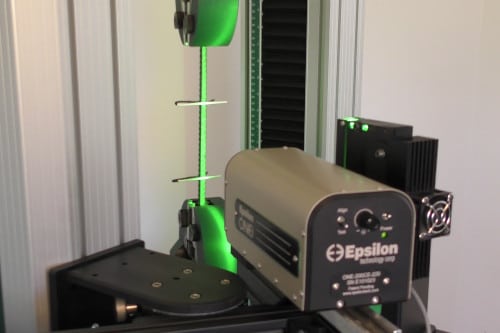
Testing rebar with Epsilon ONE provides significant advantages over contacting extensometers:
- Optical system isolates lab staff and the extensometer from dangerous, high-energy specimen failures
- Faster cycle times – no need to mount an extensometer on the specimen
- Gauge lengths up to 350 mm with ONE-500CE (contact Epsilon for longer gauge lengths)
Epsilon ONE will track marks on the rebar using either of two methods, both included with the system:
- Lines applied using paint pens
- Wire clips -for use when the rebar has surface scale or rust
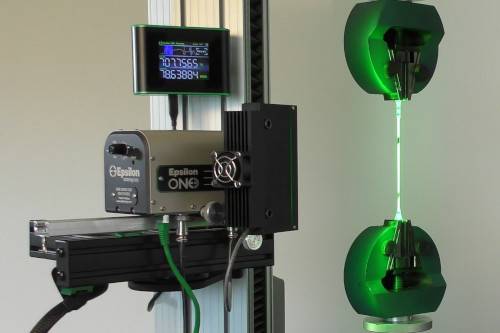 Plastics, Elastomers
Plastics, Elastomers
Epsilon ONE’s 200CE optics package can measure more than 1000% strain (200 mm field of view and 10 mm gauge length). The optics and data processing algorithms ensure that specimen marks are tracked even when their contrast is reduced due to specimen extension. This same Optics Package can measure modulus of reinforced plastic microtensile specimens having a gauge length <10 mm.
Epsilon ONE is factory calibrated and does not require calibration grids or gauge length bars, saving a great deal of time.
Composites, Metals, Ceramics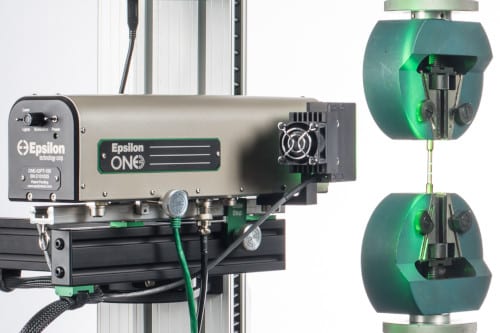
Epsilon ONE is engineered to provide the accuracy and fine resolution required for testing high-modulus materials such as metals, composites, ceramics, and CMCs.
Resolution: <0.5 µm quasistatic, <2.5 µm dynamic, <0.1 µm creep; Typical RMS resolution at typical optics and filter settings.
Extensometer Accuracy Class: ISO 9513 Class 0,5 and ASTM E83 Class B-1 or better, typical, for gauge lengths ≥10mm
Epsilon ONE is equipped to measure modulus, offset yield, stress-strain curves, and strain at failure for all of these materials. Precision Telecentric lenses and rigid, well-aligned grips are recommended for these applications.
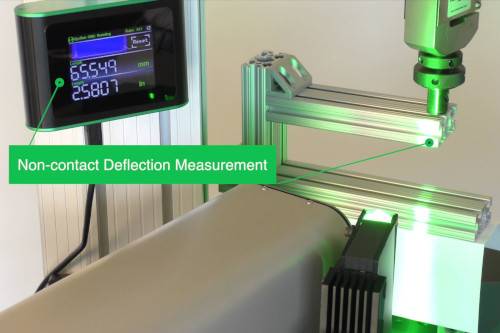 Non-Contact Deflectometer
Non-Contact Deflectometer
Epsilon ONE is also a non-contact deflection gage. It can measure the initial distance and the change in distance between two coplanar marks that are within the field of view, no matter where the marks are placed. Epsilon ONE can be used in any orientation as long as the marks it is tracking are in the measurement plane. Non-contact deflection measurement of components, assemblies, or structures is possible over a wide range of time scales and either monotonic or cyclic fatigue up to 200 Hz.
Foil, Wire, Polymer Films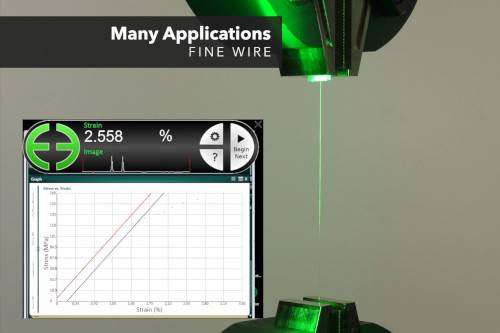
Non-contact strain measurement is the best way, and sometimes the only way, to measure strain with delicate, fine, and thin specimens. Use Epsilon ONE to measure modulus, offset yield, stress-strain curves, and elongation to break with wire, metal foil, polymer film, high-modulus fibers, fiber tows and polymer filaments. Gauge lengths can be anything from 10 mm or less, up to 185 mm with Model ONE-200CE-System, depending on the specimen’s total elongation. Ultra-high camera resolution, real time data rates up to 3000 Hz, and advanced signal processing techniques provide high strain resolution and accuracy with the lowest noise.

